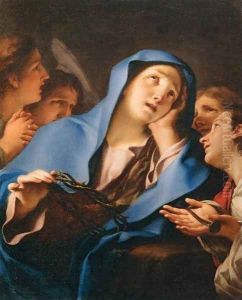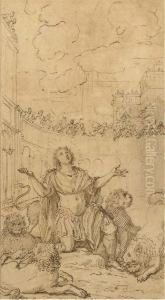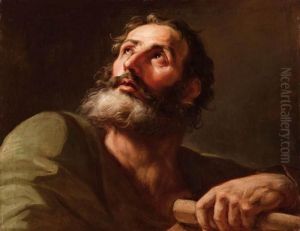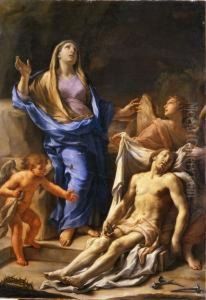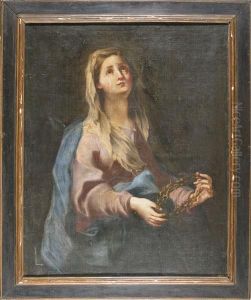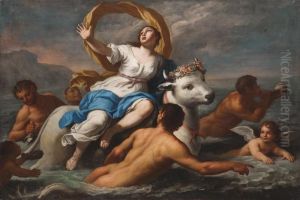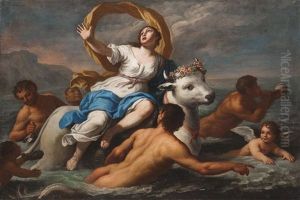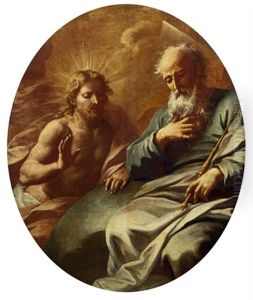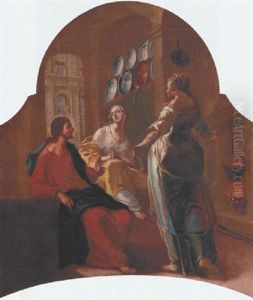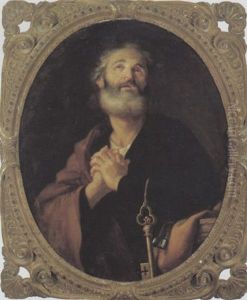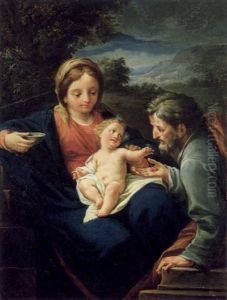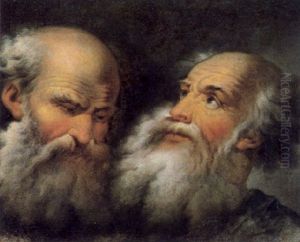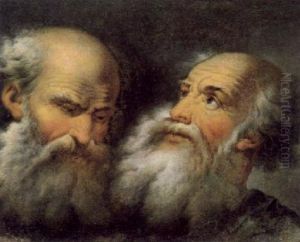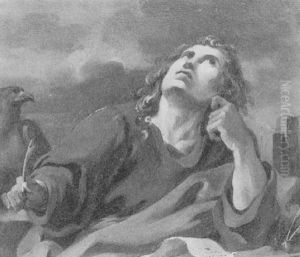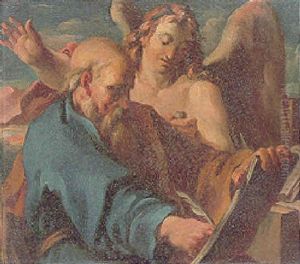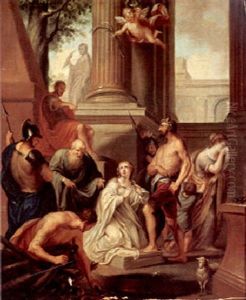Christoph Unterberger Paintings
Christoph Unterberger was an Austrian-Italian painter, born in 1732 in Cavalese, a town in the Trentino region, which was part of the Prince-Bishopric of Trent within the Holy Roman Empire, now located in modern-day Italy. Unterberger's early life and training are indicative of the cross-cultural influences prevalent in the European artistic landscape of the 18th century. He embarked on his artistic journey in his homeland but soon expanded his horizons by traveling to Rome, a hub for artists seeking to study classical antiquity and the Renaissance masters.
In Rome, Unterberger became associated with the Accademia di San Luca, an institution that played a crucial role in his development as an artist. His work primarily focused on religious and historical subjects, reflecting the tastes and spiritual inclinations of the time. Unterberger's style was deeply influenced by the Baroque tradition, yet he infused his paintings with a sense of clarity and emotional depth that was characteristic of the emerging Neoclassical movement. His ability to blend these elements showcased his versatility and helped him gain recognition among his contemporaries.
Throughout his career, Unterberger received commissions from various churches and patrons, which allowed him to contribute significantly to the artistic heritage of Rome and his native region. His works are characterized by their dynamic compositions, skillful use of color, and the emotional resonance of the figures depicted. Despite his success, Christoph Unterberger remains a somewhat lesser-known figure outside the circles of art historians specializing in the 18th-century European art scene.
Unterberger's contributions to the art world continued until his death in 1798 in Rome. His legacy, though not as widely recognized as that of some of his contemporaries, is preserved in the collections of various European museums and churches, serving as a testament to his skill and the cultural exchange between the Austrian and Italian artistic traditions of his time.
